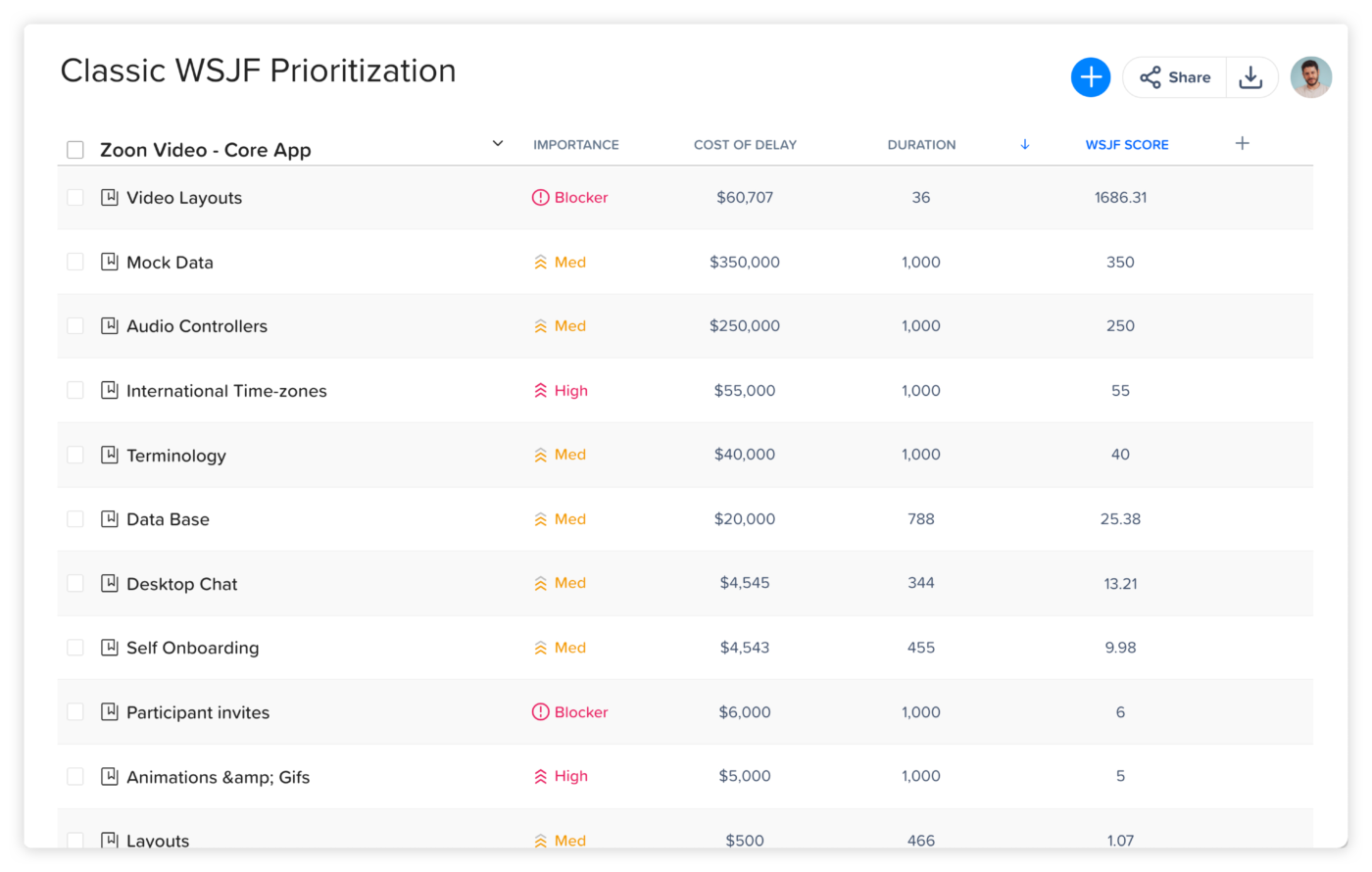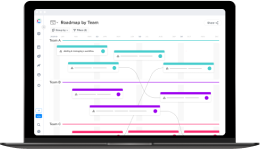WSJF Prioritization (Weighted Shortest Job First) is a proven method for ranking work items in agile product management based on the cost of delay and job size. By using WSJF in agile frameworks, teams can focus on delivering the highest value features sooner, maximizing ROI, and improving time-to-market.
What Is WSJF
The Weighted Shortest Job First (WSJF) framework lets you quantify the financial costs of developing or not developing specific items when making your prioritization decisions. Sequence your development process to continuously provide the best return on your development time. Quantify the cost of delaying an item and then estimate the time it will take to develop it. Then, to calculate your WSJF score for each item, divide the cost of delay by the job duration. You can customize the weights for either metric to reflect the needs of your organization.
When to use WSJF
Use WSJF during quarterly or PI planning, roadmap prioritization, backlog grooming, and portfolio selection to create fast, economically sound delivery sequences across product, engineering, and go-to-market initiatives. WSJF is commonly applied in Program Increment (PI) planning to sequence features and enablers across Agile Release Trains.
WSJF Prioritization, Making Smarter Decisions in Agile
Classic WSJF Prioritization offers a clear, data-driven approach to making smarter, faster product decisions. By quantifying the cost of delay and balancing it against effort, teams can focus on what delivers the greatest value first. Whether you’re running PI planning, refining your backlog, or aligning cross-functional priorities, WSJF ensures every decision supports your business goals.












































